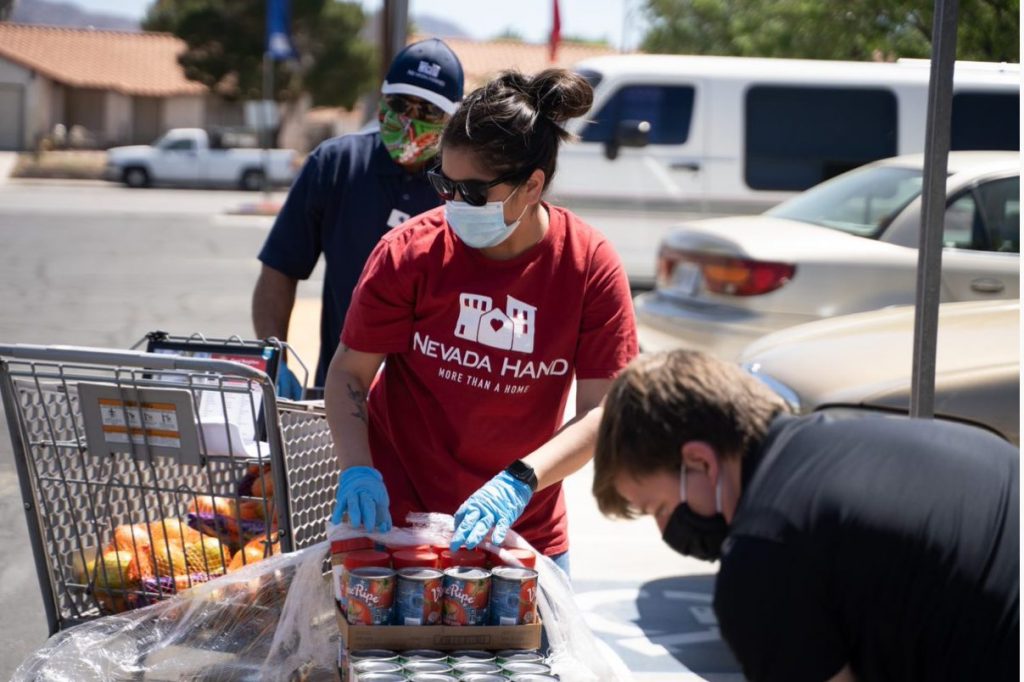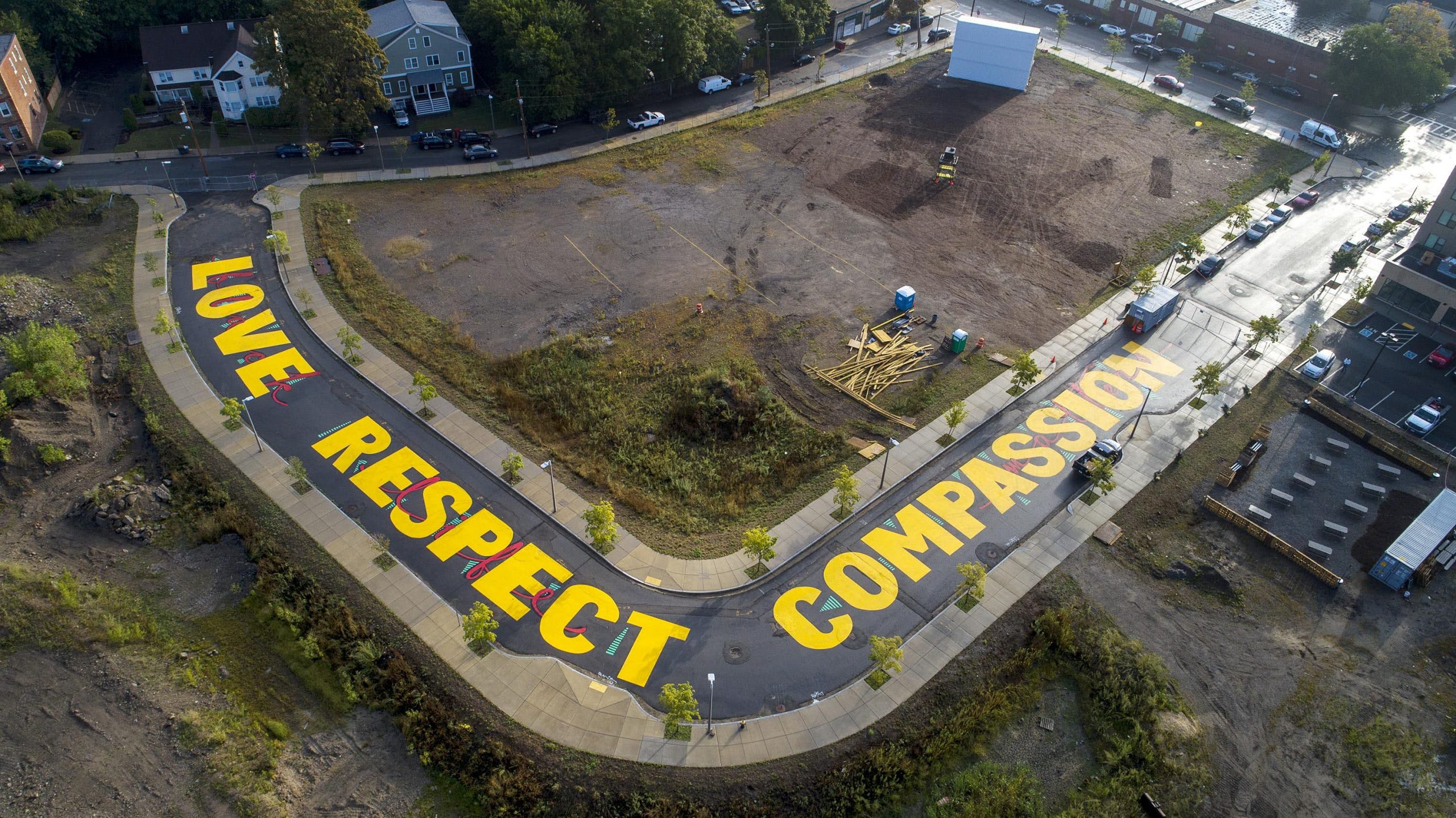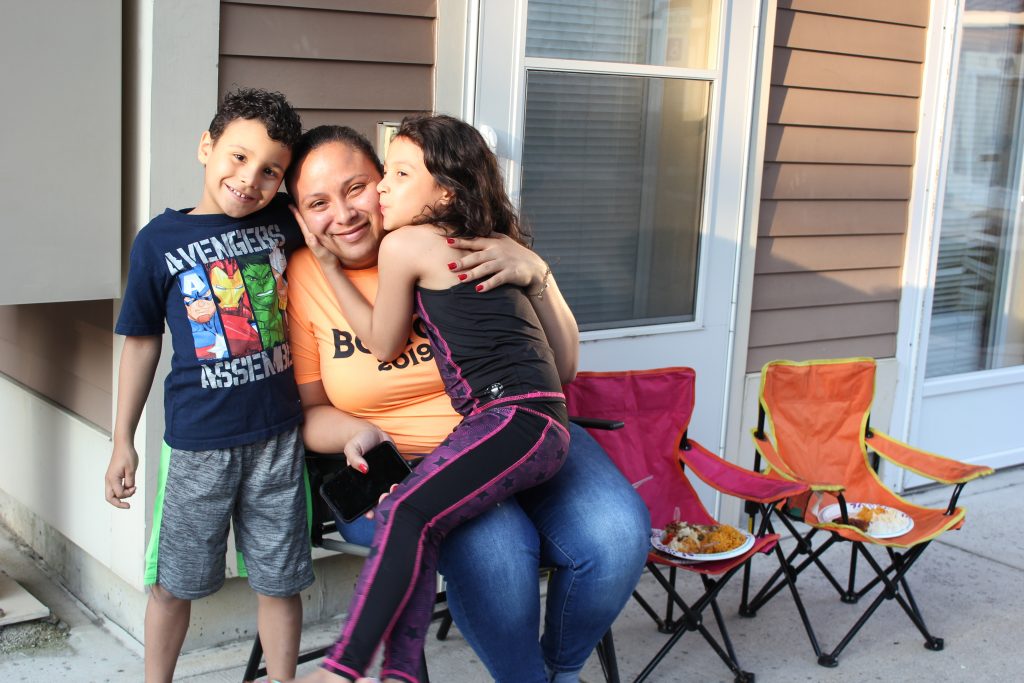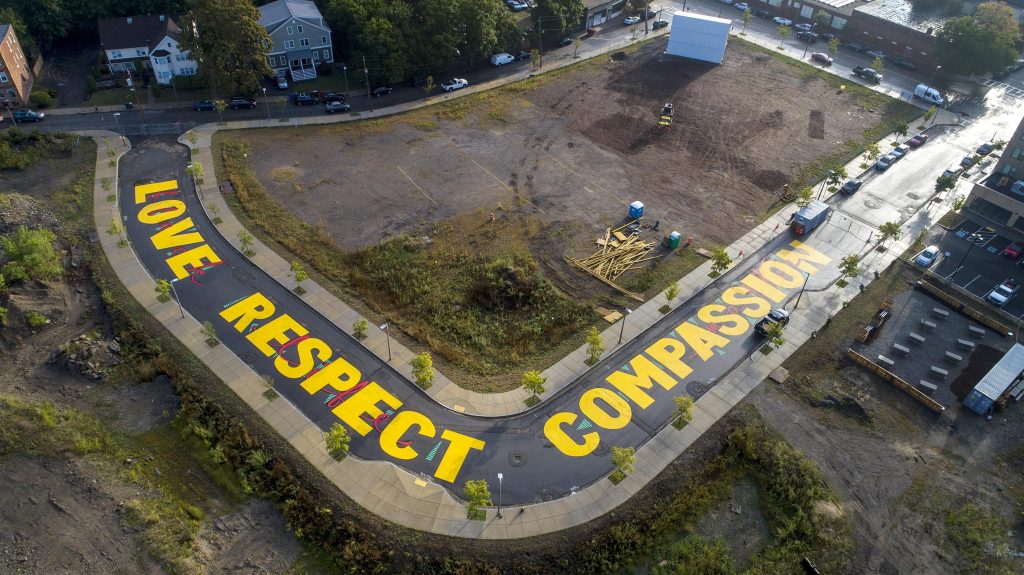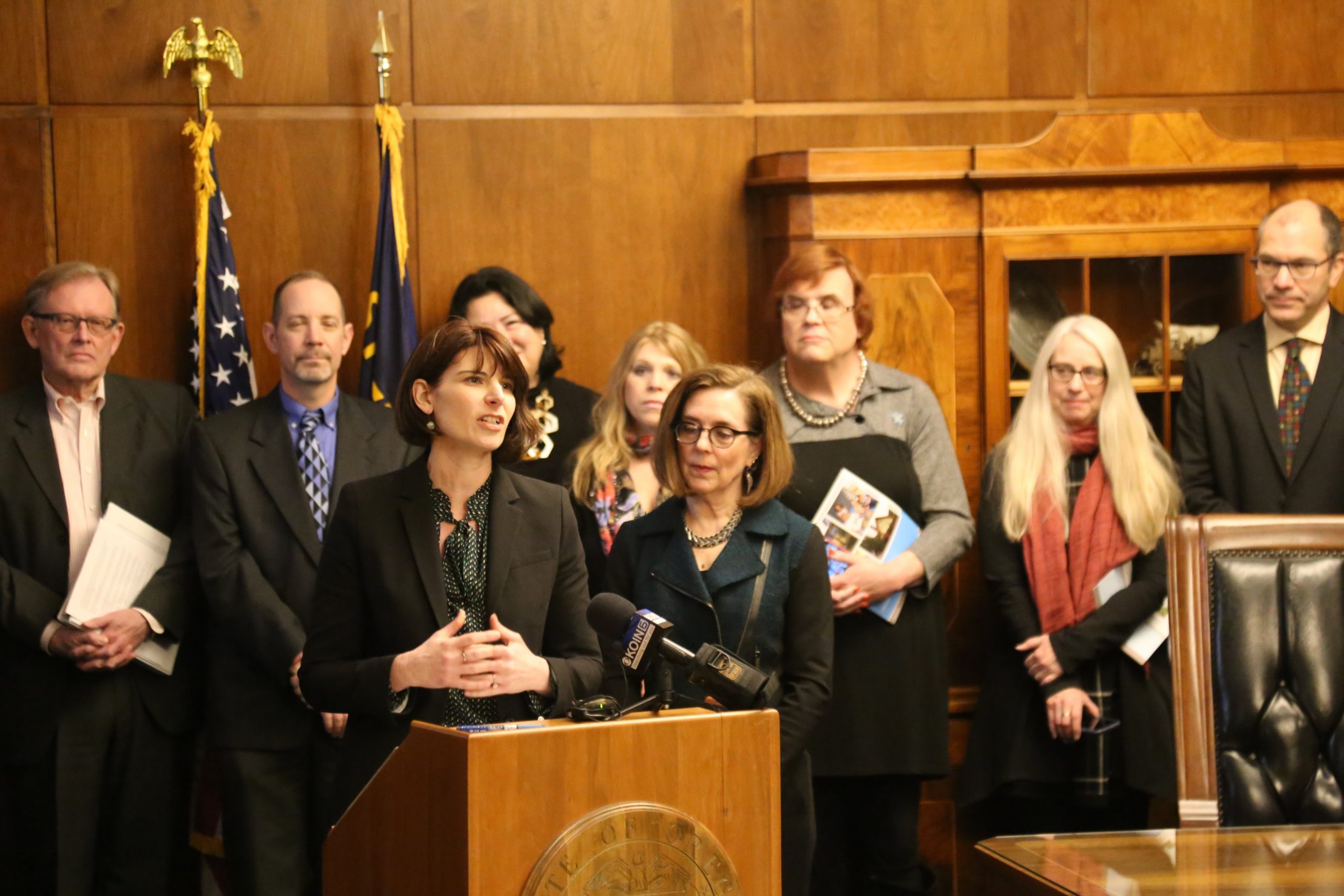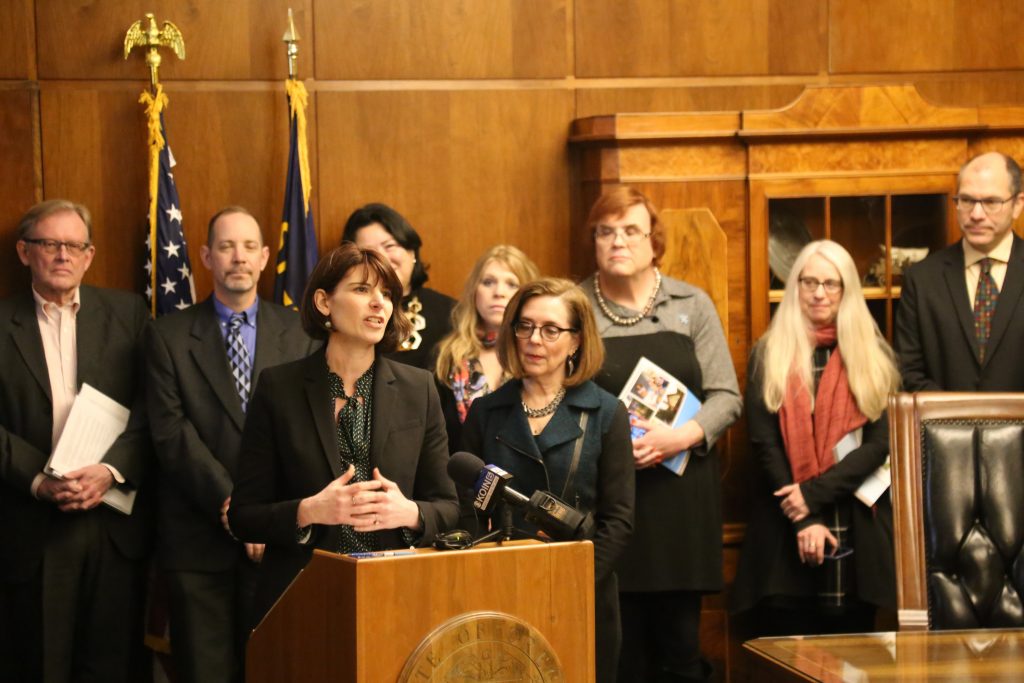What is ERAP-CLT and who does it serve?
We began the program with funding from the United Way and later expanded through partnerships with the City of Charlotte and Mecklenburg County, utilizing community development block grants (CDBG) and CARES Act funding. We have also received funding from Truist, Wells Fargo and Bank of America. These diverse sources of funding have allowed us to create a comprehensive program that addresses a broad range of challenges brought on by the pandemic.
We have processed more than 2,000 applications from individuals and families facing COVID-19 related financial hardship. The program was initially intended to help tenants living in income-restricted rental units serving those at 80% AMI and below. However, as the program evolved, we saw that there was a need for residents who were in the 80-120% AMI range. The county and CARES Act funding we received allowed us to serve cost-burdened tenants in market rate properties and tenants at 120% AMI and below.
In order to receive assistance, a tenant must fill out an application and have experienced at least one of the following types of hardship as a result of COVID-19: job loss, wage reduction, illness, or childcare challenges.
The tenant must also be living in an eligible property. In order for a property to be eligible, property managers must fill out an application and agree to certain terms and conditions. This includes providing their rent rolls every month so that our organization can double check the information against what the tenant has provided. We also require the managers to agree to certain conditions—a small rent concession, not charging late fees, and importantly, not moving forward with eviction.
These conditions ensure tenants are not negatively impacted by arrears or late fees. We also wanted to leverage this program to help reduce the pipeline for eviction filing. The City of Charlotte now has a mediation process. So those who take part in this program must agree to participate in a mediation process instead of going through the court system.
As the program has evolved, we have expanded the qualifying criteria for properties in order to help as many people as possible. We initially served three properties at 80% AMI and below with the help of private funding. When the city of Charlotte came forward with the CDBG emergency funds, we started to work with properties that had City of Charlotte investments, which brought us up to about 101 properties. Mecklenburg County also approved funding for 120% AMI and below. Now we have funds from the CARES Act and we’re able to open up the program to larger multifamily properties, or single-family homes with three or four renters.
Can you walk us through the application process and how you and your team interact with the impacted tenant?
Tenants typically find out about our program when they receive a flyer along with a late notice. To apply for assistance, they need to complete an ERAP-CLT registration form and upload supporting documentation. When we started the program, we had three properties and we received 300 applications in our first few weeks. So, we created an online application using Smart Sheets to streamline and automate the process and allow people to fill out the form on their phone or computer. The application contains demographic and eligibility information as well as authorizations, releases and additional verification items.
For clients who have challenges with technology, we have a dedicated phone line so they can connect to a counselor who will complete the application over the phone with them. To overcome the technology barrier, we also had some staff meet clients outdoors and assist them with paperwork while practicing social distance.
After the application is submitted, we check the documentation and ensure the tenant lives in an eligible property, then we assign the tenant to a counselor via email. The counselor will reach out to the tenant within 24 hours and set up a budget session. After that, the counselor qualifies the tenant based on the documentation and specific COVID-19 related need. As long as tenants can show month-over-month that they have a COVID-19 related hardship, they are eligible for the funds. Our goal is to process applications and approve clients for payment within 72 hours. After the counselor approves the application, the information is sent to our fiscal agent, Social Serve. In turn, they issue funds to the tenant’s property manager within 24 to 48 hours. Tenants need to reapply each month; as long as they remain eligible, tenants may reapply for as many months as they are in need.
It’s important to note that ERAP-CLT does not issue funding directly to the tenant. Funds are distributed to the property manager and does not cover past due arrears. In turn, the property manager is contractually obligated to credit each customer’s rental obligation.
How have you handled staffing for the ERAP-CLT program?
When we started the program, with no additional staffing, it was difficult to manage the volume of applications. To increase our capacity, we had to work around the clock and pull staff from other projects. As we have secured additional funding, we have been able to scale up using temporary employees. In order to determine how many staff we needed, we came up with a formula. In the first month, we received 300+ applications and we had eight people dedicated to the program. For every 80 applications, we need another counselor. Counseling sessions with each applicant take 30 to 45 minutes. Now we are receiving between 800 and 1,000 applications per month. Scaling up in this manner allowed us to avoid having an application backlog and waitlist.
How have your partnerships with other organizations evolved as the program has expanded?
Our clients have complex needs and often face more than one challenge. Knowing that the majority of applicants have suffered job loss, we started to work with Charlotte Works, our workforce development partner, to help tenants access opportunities. Applicants can opt-in to the workforce development part of our program and work with Charlotte Works to receive either job opportunities or training and education opportunities.
Our partnership with Legal Aid seeks to assist tenants with housing-related legal issues. Legal Aid provides counseling on tenant rights and rent disputes. Through our direct referrals to Legal Aid we seek to prevent evictions and provide tenants with information about their legal rights.
The ability to pay utility bills has also become a challenge many of our clients are facing, so we have partnered with the county to provide funding to support those in need of utility assistance.
As COVID-19 cases increase and unemployment rates rise, renters across the country are particularly vulnerable. Of the 110 million renters living in the U.S., an estimated 19-23 million are at risk of eviction by Sept. 30, 2020. In response to this crisis, The Charlotte-Mecklenburg Housing Partnership (the Housing Partnership) acted quickly to set up an Emergency Rental Assistance Program for the City of Charlotte (ERAP-CLT) to assist clients experiencing hardship due to COVID-19. The Housing Partnership is one of North Carolina’s leading affordable housing organizations, serving low- and moderate-income households and communities through real estate development, homeownership education, financing and neighborhood revitalization.
Since early April, ERAP-CLT has served more than 2,000 applicants. In an effort to expand the reach of the program and help as many individuals as possible, the Housing Partnership has leveraged its network of partner organizations to address a broad range of tenant needs that might not otherwise be covered by a typical rental assistance program. As a result, ERAP-CLT has grown into a program that assists clients with utilities and hotel bills, as well as legal and job counseling. Importantly, ERAP-CLT’s flexible and adaptive program design has also opened the program to cost-burdened households above 80% of the area median income (AMI). ERAP-CLT has not only reduced the pipeline of eviction filings, but has provided much-needed support to those living in the City of Charlotte and Mecklenburg County.
The National Housing Conference connected with Erin Barbee, senior vice president of programs and fund development, to find out how the Housing Partnership was able to put together a rental assistance program so quickly and how the program has evolved over the past few months. This conversation was edited for brevity.
What is ERAP-CLT and who does it serve?
We began the program with funding from the United Way and later expanded through partnerships with the City of Charlotte and Mecklenburg County, utilizing community development block grants (CDBG) and CARES Act funding. We have also received funding from Truist, Wells Fargo and Bank of America. These diverse sources of funding have allowed us to create a comprehensive program that addresses a broad range of challenges brought on by the pandemic.
We have processed more than 2,000 applications from individuals and families facing COVID-19 related financial hardship. The program was initially intended to help tenants living in income-restricted rental units serving those at 80% AMI and below. However, as the program evolved, we saw that there was a need for residents who were in the 80-120% AMI range. The county and CARES Act funding we received allowed us to serve cost-burdened tenants in market rate properties and tenants at 120% AMI and below.
In order to receive assistance, a tenant must fill out an application and have experienced at least one of the following types of hardship as a result of COVID-19: job loss, wage reduction, illness, or childcare challenges.
The tenant must also be living in an eligible property. In order for a property to be eligible, property managers must fill out an application and agree to certain terms and conditions. This includes providing their rent rolls every month so that our organization can double check the information against what the tenant has provided. We also require the managers to agree to certain conditions—a small rent concession, not charging late fees, and importantly, not moving forward with eviction.
These conditions ensure tenants are not negatively impacted by arrears or late fees. We also wanted to leverage this program to help reduce the pipeline for eviction filing. The City of Charlotte now has a mediation process. So those who take part in this program must agree to participate in a mediation process instead of going through the court system.
As the program has evolved, we have expanded the qualifying criteria for properties in order to help as many people as possible. We initially served three properties at 80% AMI and below with the help of private funding. When the city of Charlotte came forward with the CDBG emergency funds, we started to work with properties that had City of Charlotte investments, which brought us up to about 101 properties. Mecklenburg County also approved funding for 120% AMI and below. Now we have funds from the CARES Act and we’re able to open up the program to larger multifamily properties, or single-family homes with three or four renters.
Can you walk us through the application process and how you and your team interact with the impacted tenant?
Tenants typically find out about our program when they receive a flyer along with a late notice. To apply for assistance, they need to complete an ERAP-CLT registration form and upload supporting documentation. When we started the program, we had three properties and we received 300 applications in our first few weeks. So, we created an online application using Smart Sheets to streamline and automate the process and allow people to fill out the form on their phone or computer. The application contains demographic and eligibility information as well as authorizations, releases and additional verification items.
For clients who have challenges with technology, we have a dedicated phone line so they can connect to a counselor who will complete the application over the phone with them. To overcome the technology barrier, we also had some staff meet clients outdoors and assist them with paperwork while practicing social distance.
After the application is submitted, we check the documentation and ensure the tenant lives in an eligible property, then we assign the tenant to a counselor via email. The counselor will reach out to the tenant within 24 hours and set up a budget session. After that, the counselor qualifies the tenant based on the documentation and specific COVID-19 related need. As long as tenants can show month-over-month that they have a COVID-19 related hardship, they are eligible for the funds. Our goal is to process applications and approve clients for payment within 72 hours. After the counselor approves the application, the information is sent to our fiscal agent, Social Serve. In turn, they issue funds to the tenant’s property manager within 24 to 48 hours. Tenants need to reapply each month; as long as they remain eligible, tenants may reapply for as many months as they are in need.
It’s important to note that ERAP-CLT does not issue funding directly to the tenant. Funds are distributed to the property manager and does not cover past due arrears. In turn, the property manager is contractually obligated to credit each customer’s rental obligation.
How have you handled staffing for the ERAP-CLT program?
When we started the program, with no additional staffing, it was difficult to manage the volume of applications. To increase our capacity, we had to work around the clock and pull staff from other projects. As we have secured additional funding, we have been able to scale up using temporary employees. In order to determine how many staff we needed, we came up with a formula. In the first month, we received 300+ applications and we had eight people dedicated to the program. For every 80 applications, we need another counselor. Counseling sessions with each applicant take 30 to 45 minutes. Now we are receiving between 800 and 1,000 applications per month. Scaling up in this manner allowed us to avoid having an application backlog and waitlist.
How have your partnerships with other organizations evolved as the program has expanded?
Our clients have complex needs and often face more than one challenge. Knowing that the majority of applicants have suffered job loss, we started to work with Charlotte Works, our workforce development partner, to help tenants access opportunities. Applicants can opt-in to the workforce development part of our program and work with Charlotte Works to receive either job opportunities or training and education opportunities.
Our partnership with Legal Aid seeks to assist tenants with housing-related legal issues. Legal Aid provides counseling on tenant rights and rent disputes. Through our direct referrals to Legal Aid we seek to prevent evictions and provide tenants with information about their legal rights.
The ability to pay utility bills has also become a challenge many of our clients are facing, so we have partnered with the county to provide funding to support those in need of utility assistance.
As COVID-19 cases increase and unemployment rates rise, renters across the country are particularly vulnerable. Of the 110 million renters living in the U.S., an estimated 19-23 million are at risk of eviction by Sept. 30, 2020. In response to this crisis, The Charlotte-Mecklenburg Housing Partnership (the Housing Partnership) acted quickly to set up an Emergency Rental Assistance Program for the City of Charlotte (ERAP-CLT) to assist clients experiencing hardship due to COVID-19. The Housing Partnership is one of North Carolina’s leading affordable housing organizations, serving low- and moderate-income households and communities through real estate development, homeownership education, financing and neighborhood revitalization.
Since early April, ERAP-CLT has served more than 2,000 applicants. In an effort to expand the reach of the program and help as many individuals as possible, the Housing Partnership has leveraged its network of partner organizations to address a broad range of tenant needs that might not otherwise be covered by a typical rental assistance program. As a result, ERAP-CLT has grown into a program that assists clients with utilities and hotel bills, as well as legal and job counseling. Importantly, ERAP-CLT’s flexible and adaptive program design has also opened the program to cost-burdened households above 80% of the area median income (AMI). ERAP-CLT has not only reduced the pipeline of eviction filings, but has provided much-needed support to those living in the City of Charlotte and Mecklenburg County.
The National Housing Conference connected with Erin Barbee, senior vice president of programs and fund development, to find out how the Housing Partnership was able to put together a rental assistance program so quickly and how the program has evolved over the past few months. This conversation was edited for brevity.
What is ERAP-CLT and who does it serve?
We began the program with funding from the United Way and later expanded through partnerships with the City of Charlotte and Mecklenburg County, utilizing community development block grants (CDBG) and CARES Act funding. We have also received funding from Truist, Wells Fargo and Bank of America. These diverse sources of funding have allowed us to create a comprehensive program that addresses a broad range of challenges brought on by the pandemic.
We have processed more than 2,000 applications from individuals and families facing COVID-19 related financial hardship. The program was initially intended to help tenants living in income-restricted rental units serving those at 80% AMI and below. However, as the program evolved, we saw that there was a need for residents who were in the 80-120% AMI range. The county and CARES Act funding we received allowed us to serve cost-burdened tenants in market rate properties and tenants at 120% AMI and below.
In order to receive assistance, a tenant must fill out an application and have experienced at least one of the following types of hardship as a result of COVID-19: job loss, wage reduction, illness, or childcare challenges.
The tenant must also be living in an eligible property. In order for a property to be eligible, property managers must fill out an application and agree to certain terms and conditions. This includes providing their rent rolls every month so that our organization can double check the information against what the tenant has provided. We also require the managers to agree to certain conditions—a small rent concession, not charging late fees, and importantly, not moving forward with eviction.
These conditions ensure tenants are not negatively impacted by arrears or late fees. We also wanted to leverage this program to help reduce the pipeline for eviction filing. The City of Charlotte now has a mediation process. So those who take part in this program must agree to participate in a mediation process instead of going through the court system.
As the program has evolved, we have expanded the qualifying criteria for properties in order to help as many people as possible. We initially served three properties at 80% AMI and below with the help of private funding. When the city of Charlotte came forward with the CDBG emergency funds, we started to work with properties that had City of Charlotte investments, which brought us up to about 101 properties. Mecklenburg County also approved funding for 120% AMI and below. Now we have funds from the CARES Act and we’re able to open up the program to larger multifamily properties, or single-family homes with three or four renters.
Can you walk us through the application process and how you and your team interact with the impacted tenant?
Tenants typically find out about our program when they receive a flyer along with a late notice. To apply for assistance, they need to complete an ERAP-CLT registration form and upload supporting documentation. When we started the program, we had three properties and we received 300 applications in our first few weeks. So, we created an online application using Smart Sheets to streamline and automate the process and allow people to fill out the form on their phone or computer. The application contains demographic and eligibility information as well as authorizations, releases and additional verification items.
For clients who have challenges with technology, we have a dedicated phone line so they can connect to a counselor who will complete the application over the phone with them. To overcome the technology barrier, we also had some staff meet clients outdoors and assist them with paperwork while practicing social distance.
After the application is submitted, we check the documentation and ensure the tenant lives in an eligible property, then we assign the tenant to a counselor via email. The counselor will reach out to the tenant within 24 hours and set up a budget session. After that, the counselor qualifies the tenant based on the documentation and specific COVID-19 related need. As long as tenants can show month-over-month that they have a COVID-19 related hardship, they are eligible for the funds. Our goal is to process applications and approve clients for payment within 72 hours. After the counselor approves the application, the information is sent to our fiscal agent, Social Serve. In turn, they issue funds to the tenant’s property manager within 24 to 48 hours. Tenants need to reapply each month; as long as they remain eligible, tenants may reapply for as many months as they are in need.
It’s important to note that ERAP-CLT does not issue funding directly to the tenant. Funds are distributed to the property manager and does not cover past due arrears. In turn, the property manager is contractually obligated to credit each customer’s rental obligation.
How have you handled staffing for the ERAP-CLT program?
When we started the program, with no additional staffing, it was difficult to manage the volume of applications. To increase our capacity, we had to work around the clock and pull staff from other projects. As we have secured additional funding, we have been able to scale up using temporary employees. In order to determine how many staff we needed, we came up with a formula. In the first month, we received 300+ applications and we had eight people dedicated to the program. For every 80 applications, we need another counselor. Counseling sessions with each applicant take 30 to 45 minutes. Now we are receiving between 800 and 1,000 applications per month. Scaling up in this manner allowed us to avoid having an application backlog and waitlist.
How have your partnerships with other organizations evolved as the program has expanded?
Our clients have complex needs and often face more than one challenge. Knowing that the majority of applicants have suffered job loss, we started to work with Charlotte Works, our workforce development partner, to help tenants access opportunities. Applicants can opt-in to the workforce development part of our program and work with Charlotte Works to receive either job opportunities or training and education opportunities.
Our partnership with Legal Aid seeks to assist tenants with housing-related legal issues. Legal Aid provides counseling on tenant rights and rent disputes. Through our direct referrals to Legal Aid we seek to prevent evictions and provide tenants with information about their legal rights.
The ability to pay utility bills has also become a challenge many of our clients are facing, so we have partnered with the county to provide funding to support those in need of utility assistance.
We also work with Crisis Assistance Ministry who are able to serve those that aren’t eligible for our program, but are still in need. This could include those who cannot demonstrate that their hardship was due to COVID-19, which is required for our program. Through funding from the Foundation of the Carolinas, we are able to work with Crisis Assistance Ministry to share data and transfer information so the individual doesn’t have to start a new application process. Crisis Assistance Ministry can also provide utility assistance to those who aren’t eligible for our programs.

